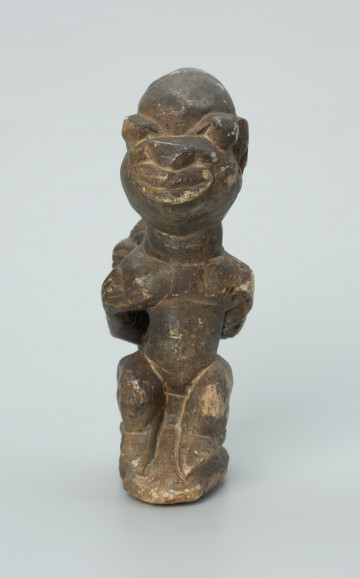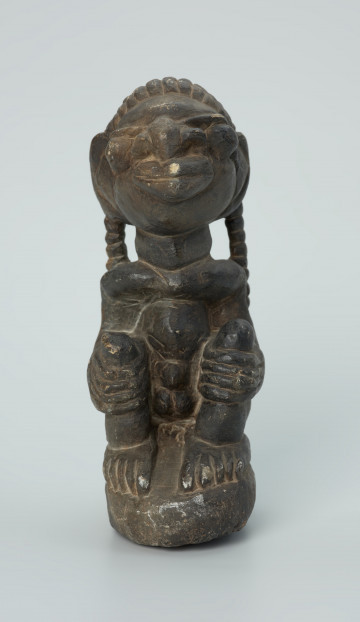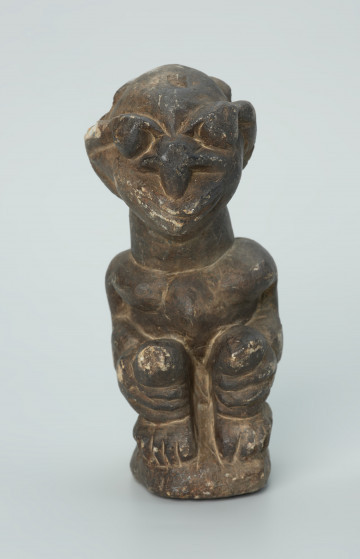
Figure of worship of forces of vegetation
1901 — 1971
National Museum in Szczecin
Part of the collection: Stone figurines from West Africa
The presented sculpture nomoli (plural nomolisia) depicts a sitting woman with a child at breast height, facing its mother. Most probably, the scene depicts a woman feeding an infant.Having offspring is still the most crucial measure of a woman's worth in traditional African communities. From an early age, girls learn their role in life by caring for younger siblings and helping their mothers prepare meals. The more children a woman has, the higher her position in the family and community is. Having children is regarded as a blessing from heaven and a kind of investment in the future - the greater the number of offspring, the greater the chances of a prosperous and secure old age for their parents. There are many depictions of a woman with a child or children and a pregnant woman in African art.The Mende people found figures of nomolisia (singular nomoli), among other things, during agricultural work. Their appearance was interpreted as a good sign, as it was believed that the excavated sculptures were the abodes of tutelary spirits responsible for the fertility of the land and fertility. They were placed in the paddy fields, and offerings were made to them after a rich harvest. Their original function is unknown. It is difficult to determine the age of the sculptures and the ethnic group that made them. According to some specialists and experts in African themes, nomolisia were connected initially with the Temne culture. After the Mende invasion, this tradition disappeared, and elements of Temne culture (including nomolisia figurines) were taken over by Kissi and Sherbo tribes. The relationship of the nomolisia to similar pomda or pomta (singular pomdo) stone figures attributed to the Kissi ethnic group of Guinea and Liberia is also not fully clarified.
Katarzyna Findlik-Gawron
Author / creator
Dimensions
cały obiekt: height: 31 cm, width: 13,5 cm
Object type
figure
Creation time / dating
Creation / finding place
Identification number
Location / status

1901 — 1971
National Museum in Szczecin

1901 — 1971
National Museum in Szczecin

1901 — 1971
National Museum in Szczecin
DISCOVER this TOPIC
National Museum in Szczecin
DISCOVER this PATH
Educational path